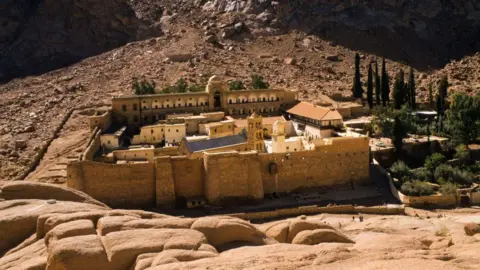The gamchha, a traditional red-and-white checkered cloth ubiquitous in Indian markets, has recently taken center stage in a significant exhibition in Delhi titled "Gamchha: From the Ordinary to the Extraordinary." Featuring over 250 pieces from various Indian states, the exhibition showcases the garment's rich diversity, from the delicate Ikat weaves of Odisha to the intricate designs of Assam's cotton "gamusa." Jaya Jaitly, founder of Dastkari Haat Samiti and curator of the exhibition, emphasizes that the event is about reclaiming the social relevance of this everyday fabric that has been largely overlooked in mainstream narratives.
This initiative is part of a broader movement aimed at transforming the understanding of Indian textiles. Recent exhibitions have shifted focus from the commercially glamorous representations of textiles to a deeper appreciation of local artisans and their crafts. Through platforms like Instagram, these artisans are increasingly recognized and celebrated, enabling a more egalitarian landscape in the textile industry. Ritu Sethi of the Crafts Revival Trust notes, "Technology is empowering craftspeople by shedding the anonymity around them."
A growing network of curators, historians, and community members is collaborating to elevate the overlooked textile traditions, while shedding light on the social dynamics and cultural histories intertwined with them. Designer David Abraham asserts that these exhibitions serve as a reclamation of cultural pride, reaffirming the deep-rooted connection Indians have with their textiles, where each piece tells a historical and cultural story.
In Kolkata, another exhibition, "Textiles of Bengal: A Shared Legacy," spotlights the historical contributions of Bengal's textile artisans, displaying artifacts dating back to the 17th century. It features hand-woven cotton saries and dhotis that represent the region's unique weaving traditions. The exhibition also includes cultural performances, highlighting the rich artistic expressions rooted in Bengal's textile heritage.
Additionally, shows like "Take Pampa: Textiles of Karnataka" and "Surface: An Exhibition of Indian Embroideries" reflect on how textiles narrate stories of marginalized communities, such as the Lambanis or Siddhi tribe, while also exploring contemporary interpretations of traditional craft through art installations and mixed media. Through these exhibitions, ancient techniques and histories are being documented meticulously, bridging gaps left by fashion institutes that often overlook regional craftsmanship.
The Devi Art Foundation's "Pehchaan: Enduring Themes in Indian Textiles" highlights themes that recurred in Indian textiles over centuries, underscoring the importance of understanding one's textile heritage for future designers.
With a surge in interest and participation from both audiences and artisans, the future appears promising for this cultural resurgence. Curatorial advisor Mayank Mansingh Kaul predicts a steady growth in this creative ecosystem, encouraging new generations of textile makers to pursue a deeper connection to their craft and heritage. As this renaissance unfolds, the hope remains that India’s textile narrative will thrive, revitalizing the stories behind its rich fabric culture for generations to come.
This initiative is part of a broader movement aimed at transforming the understanding of Indian textiles. Recent exhibitions have shifted focus from the commercially glamorous representations of textiles to a deeper appreciation of local artisans and their crafts. Through platforms like Instagram, these artisans are increasingly recognized and celebrated, enabling a more egalitarian landscape in the textile industry. Ritu Sethi of the Crafts Revival Trust notes, "Technology is empowering craftspeople by shedding the anonymity around them."
A growing network of curators, historians, and community members is collaborating to elevate the overlooked textile traditions, while shedding light on the social dynamics and cultural histories intertwined with them. Designer David Abraham asserts that these exhibitions serve as a reclamation of cultural pride, reaffirming the deep-rooted connection Indians have with their textiles, where each piece tells a historical and cultural story.
In Kolkata, another exhibition, "Textiles of Bengal: A Shared Legacy," spotlights the historical contributions of Bengal's textile artisans, displaying artifacts dating back to the 17th century. It features hand-woven cotton saries and dhotis that represent the region's unique weaving traditions. The exhibition also includes cultural performances, highlighting the rich artistic expressions rooted in Bengal's textile heritage.
Additionally, shows like "Take Pampa: Textiles of Karnataka" and "Surface: An Exhibition of Indian Embroideries" reflect on how textiles narrate stories of marginalized communities, such as the Lambanis or Siddhi tribe, while also exploring contemporary interpretations of traditional craft through art installations and mixed media. Through these exhibitions, ancient techniques and histories are being documented meticulously, bridging gaps left by fashion institutes that often overlook regional craftsmanship.
The Devi Art Foundation's "Pehchaan: Enduring Themes in Indian Textiles" highlights themes that recurred in Indian textiles over centuries, underscoring the importance of understanding one's textile heritage for future designers.
With a surge in interest and participation from both audiences and artisans, the future appears promising for this cultural resurgence. Curatorial advisor Mayank Mansingh Kaul predicts a steady growth in this creative ecosystem, encouraging new generations of textile makers to pursue a deeper connection to their craft and heritage. As this renaissance unfolds, the hope remains that India’s textile narrative will thrive, revitalizing the stories behind its rich fabric culture for generations to come.



















